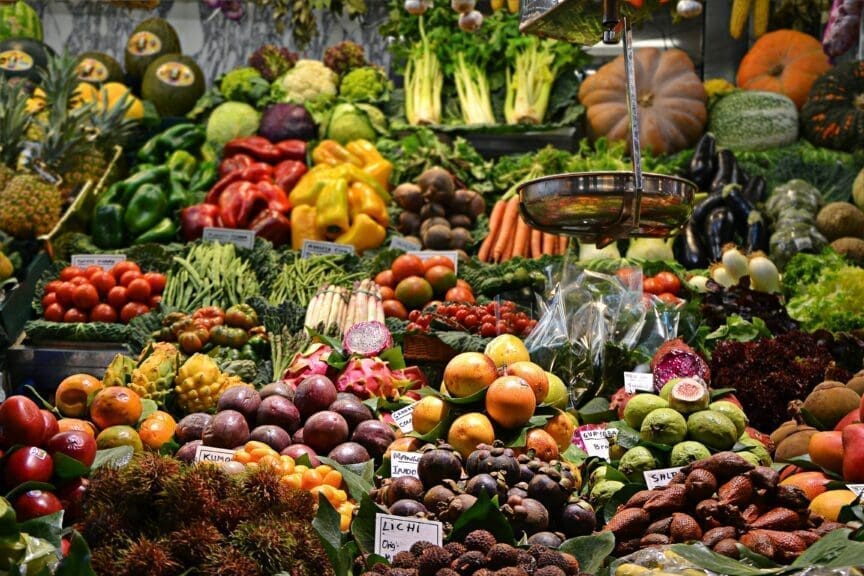SecondBite ambassador Sally Williams on fighting food waste
Is food waste really a big problem?
Yes! Food waste is a big problem, it is a worldwide issue and Australia is a large contributor to food wastage. It is a problem because of the consequences it has on the environment, with food waste taken to landfill and contributing to greenhouse gas emissions. The resources required to create that food should be taken into consideration; using water and land, clearing forests, draining wetlands and consuming resources for food that may never be eaten. SecondBite is committed to finding a solution to the social and environmental impacts of food waste.
What are some of the causes of confusion around food waste?
The main thing that confuses consumers is labelling. Products feature a ‘Use By’ or a ‘Best Before’ sticker on them. The ‘Use By’ label applies to dairy and meat products so they need to be consumed at or before this date. ‘Best Before’ labelling is used for tinned or packaged goods that can still safely be consumed after the date on the packaging as long as the food item has been stored appropriately. The quality of these goods may diminish slightly, but the food is discretionarily fine.
Consumers are also sometimes confused about what can be eaten when certain elements appear to go mouldy. For example, cheese with mould can still be eaten if the mouldy part is just cut off the block. Two great sources of information to help you determine if food is still fine to eat include stilltasty.com and foodkeeper.com.
As a general rule, packaged goods that have been well stored and unopened can be eaten after their ‘best before’ date, however discretion is always advised.
What foods are the most commonly wasted?
The four most wasted food items are milk, bread, lettuce and bananas as most have a short shelf life. A lot of fruit and vegetables in general are wasted, including household staples such as apples, potatoes, tomatoes, and avocadoes. Dry goods and canned foods can be kept for 2-4 years after purchase if they are stored well.
How do we reduce food waste at home?
Consumers shopping smart can significantly reduce food waste at home.
- Plan ahead: Before you do your weekly shop, plan your meals and shop accordingly. That way, you know what you are eating and how much food is needed. Planning ahead also allows consumers to be budget savvy, as they are aware how much their weekly food shop costs
- Shop in bulk: This is a great way to increase the value for money in a shop, but the greatest risk is buying too much of a food item and having it then go to waste. If consumers buy extra, the best way to extend the life of these products is by using a vacuum to airtight seal food and then freeze it
- Store produce: Proper storage extends the life of food significantly. Knowing what food you have in the fridge and using it when the product quality starts to diminish is a great way to reduce the amount of food thrown away. Understanding your fridge settings and how best to store food will also keep food in good quality for longer. This includes properly storing dry goods and tins to extend their lifespan in the kitchen. Keeping goods airtight will increase their lifespan significantly and will save you money as you do not have to continue buying replacements.
What tips do you have to help people reduce food waste?
Have fun with your extra food! Allocate a chef of the week, and the chef makes a meal out of whichever ingredients are at home. This will reduce the cost of your weekly shopping as you continue to eat what is there.
Another way to create less food waste is to purchase the portions of food you will use during the week. If you have extra fruit and vegetables, use those ingredients to make a juice or soup. If you have cooked a large batch, store the excess in the freezer. The same strategy can be used for bread. Put half a loaf into the freezer and use frozen slices for toast, keep the fresh slices for sandwiches. Herbs freeze well, as to most batch meals such as stir fry.
If you have an excess of food that you aren’t going to eat, perhaps you can share it with friends or neighbours. If you bulk buy fruit and veg and buy too much… make a hamper and ask if your local charity will accept it.
SecondBite approximates that the average Australian family throws away $25-50 of edible food each week, accounting for about 15% of the total shop. Annually, that may be costing families $2,600.
SecondBite is a leading national food rescue organisation. They work with a range of food suppliers to rescue surplus fresh food from across the network and redistribute it to local charities and non-profits around Australia. These groups run food programs to support people in need in their communities. SecondBite supports over 1,000 community food programs across Australia and supplies all food completely free of charge. The organisations they work with make a real difference to peoples’ lives, providing more than just a meal – they provide support, security, hope and friendship to those who are doing it tough. Visit secondbite.org
Sally Williams has been an iconic part of Australian TV, starring in Brand Power ads. Now, she’s educating people about food wastage and sustainability, joining forces with SecondBite to make a difference in Australia.
Shared from It’s My Home magazine published by Genworth.


